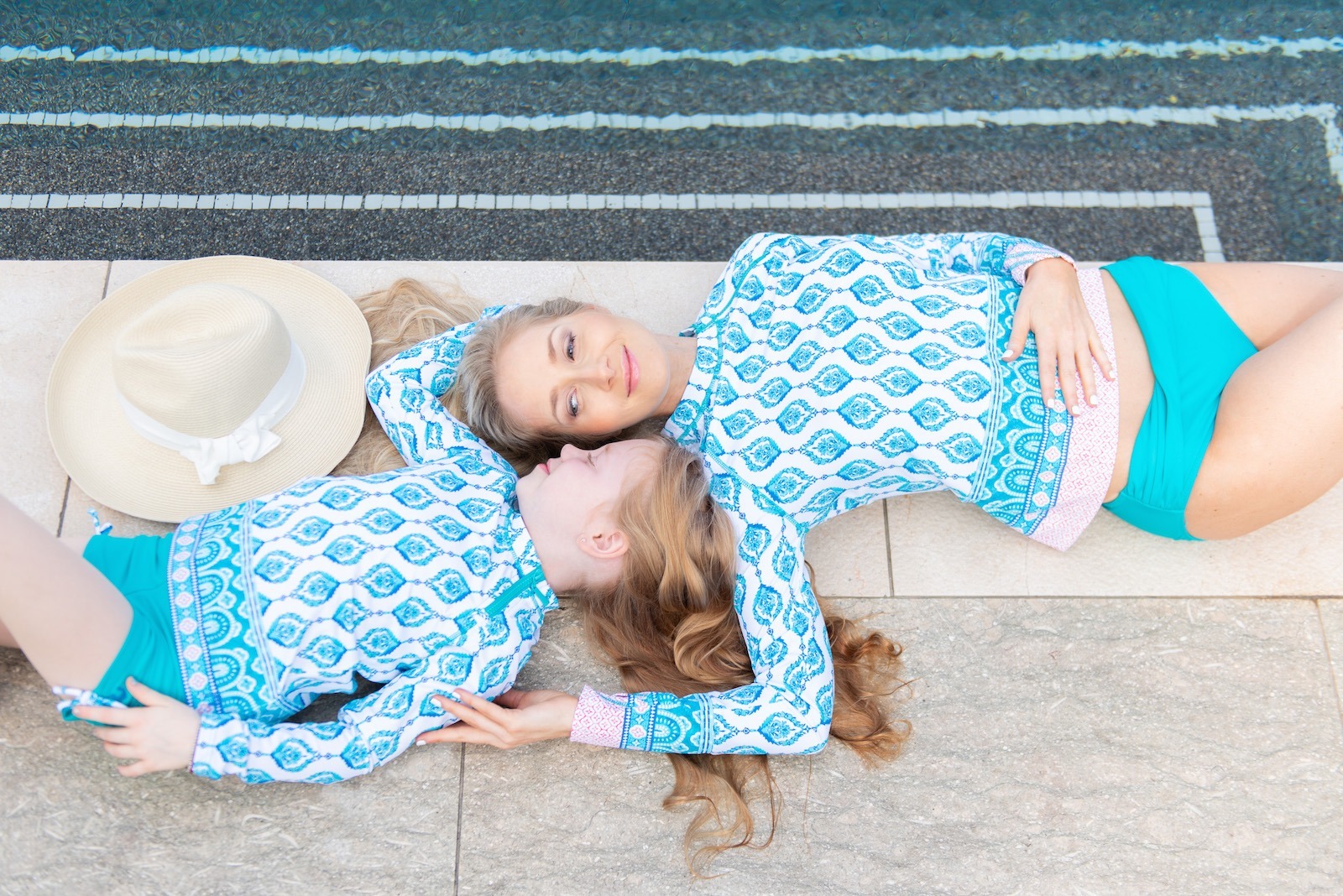 Beauty & Self Care
Beauty & Self Care  Nurture Yourself
Nurture Yourself
UPF vs. SPF: The Scoop on Sun-Protective Clothing
By Lisa Elaine HeldHome » Nurture Yourself » UPF vs. SPF: The Scoop on Sun-Protective Clothing
Sun-protective clothing sounds a little unnecessary, until you consider the statistics.
Sorry to be a downer, but according to the American Academy of Dermatology, skin cancer is the most common cancer in the U.S., with about one in five Americans developing it in their lifetime. Some types are not that serious; others, such as melanoma are extremely dangerous. The scariest part: Severe sunburns during childhood are associated with increased risk of melanoma later in life, so protecting your kiddos from burns is extra important.
RELATED: 5 Ways to Heal a Sunburn
Sunscreen, of course, is essential, but SPF only goes so far: It rubs off easily, is a pain to reapply over and over, and it’s tough to make sure you’ve covered every spot of skin. “I’ve been wearing sun protective fabrics—called ultraviolet protection factor or UPF fabrics—for years,” says top dermatologist Whitney Bowe, MD, who partnered with Cabana Life on a beachy UPF collection for women and girls.
Dr. Bowe said she’s been shocked to find out how few people know about UPF fabrics and their benefits, so we asked her to help us break it down.
What Is UPF Fabric?
If you’re like me, your first question is going to be: Can’t I just throw on any T-shirt for sun protection?
The problem is that while plenty of clothing that isn’t specifically marketed as UPF fabric will protect you from UVA and UVB rays, plenty of it won’t—and it’s hard to know which is which. For instance, the Skin Cancer Foundation says that “densely woven cloth, like denim, canvas, wool or synthetic fibers, are more protective than sheer, thin or loosely woven cloth,” and whatever poolside cover-up you’re packing probably falls into the latter category. (Sure, wear dark denim to your next beach day.)

Clothing that is specifically designed to be something you’d want to wear on a hot, sunny day that comes with a high UPF makes sense, then. “Just like SPF is a measure of how effectively your sunscreen blocks certain UV rays from damaging your skin, UPF is a measure of how well your fabric blocks UV rays,” says Dr. Bowe. “I always recommend a UPF of 50+, which is the highest rating available. If you see that UPF 50+ on the label, it means the fabric has been tested in a lab setting, and has been shown to block up to 98% of UVA and UVB rays.”
Benefits of Sun-Protective Clothing
Dr. Bowe is a dermatologist, and she’s also mom to a fair-skinned, red-haired daughter. “I am very serious about sunscreen application for myself and my daughter,” she says. “It’s not that sun protective clothing replaces the need for sunscreen altogether, but it does dramatically reduce the amount of sunscreen you need to apply and reapply throughout the day.”
With a kid, you can see how that would be extra helpful. Instead of having to hold them in place and slather them up every couple of hours or every time they get wet, you can throw a shirt made with UPF fabric on them and dramatically cut down on the surface area that needs to be covered in sunscreen … so they can get back to building sand castles.
Dr. Bowe says UPF fabrics generally allow her to use about half the amount of sunscreen she normally would. This is also helpful if you’re concerned about ingredients in sunscreen and would prefer to cut down on the amount of a chemical sunscreen you’re using. (Or if you’re using a mineral sunscreen with natural ingredients, they often take longer to rub in. So again, it’s a time-saver.)
RELATED: The Healthy Sunscreens Beauty Experts Use
How to Wear Sun-Protective Clothing
The main point: “You don’t have to put sunscreen on any skin that’s covered by this fabric, so it really changes your relationship with the sun,” Dr. Bowe says.
One of her favorite UPF items is a rash guard. Sure, they’re really made to protect surfers from body chafing, but they’re great because if they’re made with UPF fabric, they cover up a lot of body surface area and are fine to wear in the water.
Just don’t forget to regularly apply sunscreen to your exposed areas—especially your sensitive face.
(Photos: KSharp Photography)
Lisa is a freelance writer who covers the food system, agriculture, and the environment. Learn more at lisaelaineheld.com.
DISCOVER MORE
RECENT ARTICLES

Want a sneak peek inside the program?
Get FREE access to some of the core training materials that make up our signature program – Become a Nutrition Coach.
Get Access"*" indicates required fields














































































































































































































































































































































































































































































































































































































































































































































































































































































































































































































































































































































































































































































































































































































































